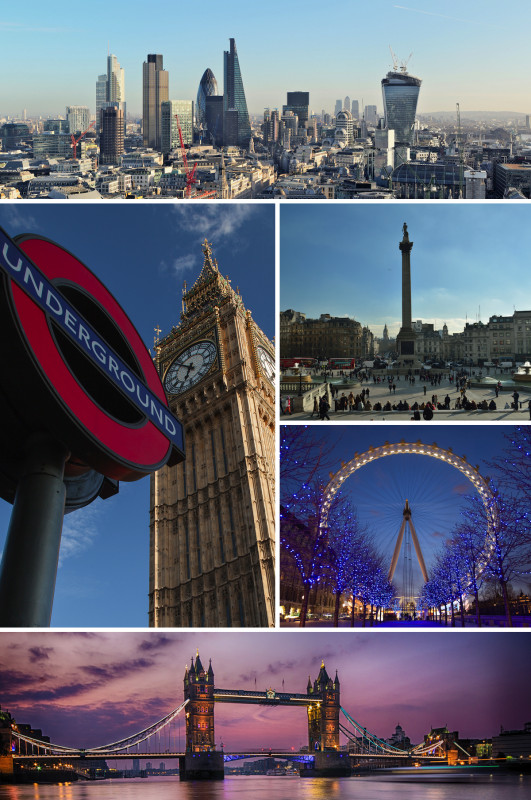London is the capital and largest city of England and the United Kingdom. With a population of 9.1 million in 2024, its metropolitan area is the largest in Western Europe at 15.1 million. Situated on the River Thames, it has been a significant settlement for nearly 2,000 years, starting as Londinium, founded by the Romans. The City of London serves as its financial center, while the City of Westminster houses the national government and parliament. London expanded rapidly in the 19th century, becoming the world's largest city. Today, "London" refers to the metropolis surrounding the City of London, primarily within Greater London, which is governed by 33 local authorities and the Greater London Authority.
1902: Slazenger provides tennis balls for Wimbledon
Since 1902, Slazenger has provided tennis balls for Wimbledon, which is the oldest sponsorship in sport.
1903: Wettest Year on Record
1903 was recorded as the wettest year in London, with a total rainfall of 38.1 inches (969 mm).
1906: The Ritz Opening
In 1906, The Ritz hotel opened in London.
1908: London hosts Summer Olympics
In 1908, London hosted the Summer Olympics.
August 1911: High Temperature
In August 1911, a temperature of 37.8 °C (100.0 °F) was recorded at the Greenwich station, but later disregarded as non-standard.
1912: Suffragette bombing and arson campaign begins
In 1912, London was the target of many attacks during the suffragette bombing and arson campaign, in which historic landmarks such as Westminster Abbey and St Paul's Cathedral were bombed.
1914: Suffragette bombing and arson campaign ends
In 1914, London was the target of many attacks during the suffragette bombing and arson campaign, in which historic landmarks such as Westminster Abbey and St Paul's Cathedral were bombed.
November 1920: Burial of the Unknown Warrior and unveiling of the Cenotaph
On 11 November 1920, the tomb of the Unknown Warrior was buried in Westminster Abbey. The Cenotaph, located in Whitehall, was unveiled on the same day.
1921: Driest Year on Record
In 1921, London experienced its driest year on record, with a total rainfall of only 12.1 inches (308 mm).
1925: London World's Largest City until 1925
London was the world's largest city from about 1831 to 1925.
1925: Winnie-the-Pooh Debuts in London's Evening News
On Christmas Eve in 1925, Winnie-the-Pooh, a character based on a stuffed toy, debuted in London's Evening News.
1925: McVitie's starts manufacturing chocolate digestives
Since 1925, chocolate digestives, a popular biscuit for dunking in tea, have been manufactured by McVitie's at their Harlesden factory in north-west London.
1928: Odeon Cinemas Founded in London
In 1928, the largest cinema chain in the country, Odeon Cinemas, was founded in London by Oscar Deutsch.
1929: Hackney Carriages
In 1929, the Austin Motor Company began making hackney carriages (London taxis).
1929: Introduction of the police telephone box in 1929
Introduced by the Met in 1929, the blue police telephone box (the basis for the TARDIS in the television series Doctor Who) was once a common sight throughout London and regional cities in the UK.
1931: The Dorchester Opening
In 1931, The Dorchester hotel opened in London.
1931: EMI Formed; Stereo Sound Created
In 1931, the record label EMI was formed in London, and Alan Blumlein, an early employee, created stereo sound that year.
1932: Opening of Victoria Coach Station
In 1932, Victoria Coach Station opened in London.
1933: Creation of London Transport
In 1933, the London Passenger Transport Board, or London Transport, was created, integrating the London Underground, trams, and buses into one system.
1934: Flying Scotsman Record
In 1934, the steam locomotive named Flying Scotsman was the first locomotive to reach the officially authenticated speed of 100 miles per hour (161 km/h).
1937: Implementation of 'St Paul's Heights' Policy
Since 1937, the City of London has implemented the 'St Paul's Heights' policy, restricting high-rise development that would obstruct protected views of St Paul's Cathedral and other historic buildings.
1939: Greater London's population peak in 1939
Greater London's population reached an estimated peak of 8.6 million in 1939.
1939: Construction of Battersea Power Station
The Battersea Power Station, a local landmark by the river in the south-west of London, was built in 1939.
1947: Appearance of the Red Double-Decker Bus
In 1947, the red double-decker bus first appeared in London with the AEC Regent III RT.
1948: London hosts Summer Olympics
In 1948, London hosted the Summer Olympics.
1948: Austin FX3 Taxis
In 1948, the Austin FX3 was introduced as a hackney carriage in London.
1948: Oliver Twist Film Released
In 1948, the film Oliver Twist was released.
1949: Zebra Crossing Development
In 1949, the zebra crossing, the world's first marked pedestrian crossing, was developed and trialled by the Ministry of Transport due to the increase in car traffic after the Second World War.
1949: British Academy Film Awards Held in London
Since 1949, the British Academy Film Awards (BAFTAs) have been held in London, with the BAFTA Fellowship being the Academy's highest accolade.
1950: The Lion, the Witch and the Wardrobe Depicts Evacuation of Children
In 1950, The Lion, the Witch and the Wardrobe by C. S. Lewis depicted the evacuation of children from London during the Second World War.
1951: Scrooge Film Released
In 1951, the film Scrooge was released.
1951: Zebra Crossing Installation
In 1951, the first zebra crossing was officially installed in London.
1952: Photo 51 captured at King's College London
In 1952, at King's College London, a team led by Rosalind Franklin captured Photo 51, which provided critical evidence in identifying the structure of DNA.
1952: The Mousetrap performed in the West End
Since 1952, Agatha Christie's The Mousetrap, the world's longest-running play, has been performed in London's West End.
1952: The Great Smog of 1952
The Great Smog of 1952 led to the Clean Air Act 1956, which ended the "pea soup fogs" for which London had been notorious, and had earned it the nickname the "Big Smoke".
1953: Peter Pan Film Released
In 1953, the film Peter Pan was released.
1956: Clean Air Act 1956
The Great Smog of 1952 led to the Clean Air Act 1956, which ended the "pea soup fogs" for which London had been notorious, and had earned it the nickname the "Big Smoke".
1957: BFI London Film Festival Founded
Founded in 1957, the BFI London Film Festival takes place over two weeks every October.
1958: Paddington Bear created by Michael Bond
In 1958, Michael Bond created Paddington Bear, a refugee character found in Paddington station.
1958: Austin FX4 Taxis
In 1958, the Austin FX4 was introduced as a hackney carriage in London.
1960: Peeping Tom Film Released
In 1960, Michael Powell's London-set early slasher film Peeping Tom was released.
1961: Non-White Ethnic Minority Population
Estimates for 1961 put the total non-White ethnic minority population at 179,109, comprising 2.3% of the population at the time.
1961: One Hundred and One Dalmatians Film Released
In 1961, the film One Hundred and One Dalmatians was released.
1962: Marshall Amplification Founded
In 1962, Jim Marshall founded Marshall Amplification in London.
1964: My Fair Lady and Mary Poppins Films Released
In 1964, the films My Fair Lady and Mary Poppins were released.
1965: Expansion of London's Political Boundaries
In 1965 London's political boundaries were expanded in response to the growth of the urban area, and a new Greater London Council was created.
1965: Creation of Greater London
Since 1965, Greater London has been divided into 32 London boroughs, in addition to the City of London.
1965: Greater London Administrative Area
Since 1965, London has largely comprised the administrative area of Greater London, governed by 33 local authorities and the Greater London Authority.
1966: Blowup Film Released
In 1966, the film Blowup was released.
1967: First Cash Machine
In 1967, Barclays installed the first cash machine (ATM) in its branch in Enfield, north London.
1970: Nationalisation of Victoria Coach Station
In 1970, Victoria Coach Station was nationalised and then purchased by London Transport (now Transport for London).
1971: White British Population
Estimates for 1971 put the White British population at 6,500,000, which accounted for 87% of the total population.
1971: A Clockwork Orange Film Released
In 1971, the film A Clockwork Orange was released.
1973: Bomb attacks by the Provisional Irish Republican Army start in 1973
From 1973, during the Troubles in Northern Ireland, London was hit by bomb attacks by the Provisional Irish Republican Army.
December 1981: Lowest Temperature Recorded
On 13 December 1981, Northolt recorded the lowest temperature in London at −17.4 °C (0.7 °F).
1981: 1981 Brixton Riot
Racial inequality was highlighted by the 1981 Brixton riot.
1982: Buckingham Palace Features in The BFG
In 1982, Buckingham Palace was featured in Roald Dahl's novel The BFG.
1986: The Great Mouse Detective Film Released
In 1986, the film The Great Mouse Detective was released.
1986: Abolishment of the Greater London Council in 1986
The Greater London Council was abolished in 1986, leaving London with no central administration until 2000.
1987: Opening of the Docklands Light Railway
In 1987, the Docklands Light Railway (DLR) opened, serving the Docklands, Greenwich, and Lewisham.
1990: Long-Term Residents
According to the 2021 census, 7.3% of London's population had arrived prior to 1990.
1991: Immigration to London
A net 726,000 immigrants arrived in London between 1991 and 2001.
1991: Arrivals Between 1991 and 2001
According to the 2021 census, 5.7% of London's population had arrived between 1991 and 2001.
1991: Non-White Ethnic Minority Population
The non-White ethnic minority population rose to 1,346,119 and 20.2% in 1991.
1992: Publication of the Cadbury Report
In 1992, Sir Adrian Cadbury produced the Cadbury Report, a code of best practice for corporate governance, commissioned by the London Stock Exchange.
1993: Bronze Age bridge remains found in 1993
In 1993, remains of a Bronze Age bridge were found on the south River Thames foreshore, upstream from Vauxhall Bridge. Two of the timbers were radiocarbon dated to 1750–1285 BC.
1994: Opening of the Channel Tunnel
In 1994, the opening of the Channel Tunnel connected London directly to the continental rail network, allowing Eurostar services to begin.
1994: Minister for London post created in 1994
The ministerial post of Minister for London was created in 1994; however, it has been vacant since July 2024.
1999: Notting Hill Film Released
In 1999, the film Notting Hill was released.
2000: Creation of the Greater London Authority in 2000
In 2000, the Greater London Authority was created, restoring central administration to London.
2000: Tate Modern Opens
In 2000, the modern art collection moved to Tate Modern, a new gallery housed in the former Bankside Power Station, accessed by pedestrians north of the Thames via the Millennium Bridge.
2000: Plant Species
The London Natural History Society found that 2000 species of flowering plant have been found growing in London.
2001: Immigration to London
A net 726,000 immigrants arrived in London between 1991 and 2001.
2001: Arrivals Between 1991 and 2001
According to the 2021 census, 5.7% of London's population had arrived between 1991 and 2001.
2001: Office Space in Greater London
In 2001, Greater London had 27 million square meters of office space, with the City containing the most, at 8 million square meters.
2001: Children Born to Foreign-Born Mothers
In 2001, foreign born mothers made up 43.3% of births in London.
2002: 28 Days Later Film Released
In 2002, the film 28 Days Later was released.
2003: European Heat Wave
During the 2003 European heat wave, prolonged heat led to hundreds of heat-related deaths in London.
2003: Kew Gardens on UNESCO list
In 2003, Kew Gardens, near Richmond Park, which has the world's largest collection of living plants, was put on the UNESCO list of World Heritage Sites.
2003: Introduction of the Congestion Charge
In 2003, a congestion charge was introduced to reduce traffic volumes in central London.
2003: Report Attributes Quarter of UK Leisure Economy to London
In 2003, a report attributed a quarter of the entire UK leisure economy to London, with 25.6 events per 1000 people.
2003: Love Actually Film Released
In 2003, the film Love Actually was released.
January 2005: Language Diversity
In January 2005, a survey claimed that more than 300 languages were spoken in London, and more than 50 non-indigenous communities had populations of more than 10,000.
July 2005: London Awarded 2012 Summer Olympics and Terrorist Attacks in July 2005
On 6 July 2005, London was awarded the 2012 Summer Olympics. On 7 July 2005, three London Underground trains and a double-decker bus were bombed in a series of terrorist attacks.
2005: V for Vendetta Film Released
In 2005, the film V for Vendetta was released.
2006: Children Born to Foreign-Born Mothers
By 2006, foreign-born mothers accounted for 52.5% of births in London.
2006: London Jewish Forum Established
The London Jewish Forum was set up in 2006 in response to the growing significance of devolved London Government.
2007: London Overground Responsibility
In 2007, the Mayor of London assumed responsibility for some local lines, which now form the London Overground network.
2007: Eurostar Services
Since 2007, high-speed trains link St. Pancras International with various European cities via the High Speed 1 rail link and the Channel Tunnel.
June 2008: Transport for London Ownership of Tramlink
Since June 2008, Transport for London has completely owned and operated Tramlink.
2008: London Named as one of the world's most influential global cities in 2008
In 2008 Time magazine named London alongside New York City and Hong Kong as Nylonkong, hailing them as the world's three most influential global cities.
2008: Impact of the 2008 Financial Crisis
In 2008, London's economy was affected by the global financial crisis.
2008: Sweeney Todd: The Demon Barber of Fleet Street Film Released
In 2008, the film Sweeney Todd: The Demon Barber of Fleet Street was released.
June 2009: High-Speed Domestic Trains
In June 2009, the first high-speed domestic trains started, linking Kent to London.
2009: Cargo Handling in the Port of London
As of 2009, the Port of London handled 45 million tonnes of cargo each year, making it the second-largest in the United Kingdom.
2009: Accessibility Improvements
From 2009, London's wheelchair-accessible bus network became more accessible to hearing and visually impaired passengers with audio-visual announcements.
2009: Average Car Speed During Rush Hour
In 2009, the average speed of a car in London during rush hour was recorded at 10.6 mph (17.1 km/h).
2009: London councils expenditure 2009
In 2009–2010 the combined revenue expenditure by London councils and the GLA amounted to just over £22 billion (£14.7 billion for the boroughs and £7.4 billion for the GLA).
July 2010: Launch of Bicycle Hire Scheme
In July 2010, a bicycle hire scheme was launched in London, proving successful and generally well-received.
2010: Arrivals Between 2001 and 2010
According to the 2021 census, 10.4% of London's population had arrived between 2001 and 2010.
2010: London's Economic Recovery
By 2010, London had recovered from the 2008 financial crisis, regained lost ground, and re-established its economic dominance.
2010: London councils expenditure 2010
In 2009–2010 the combined revenue expenditure by London councils and the GLA amounted to just over £22 billion (£14.7 billion for the boroughs and £7.4 billion for the GLA).
2010: Timber structure foundations found in 2010
In 2010, foundations of a large timber structure, dated to 4800–4500 BC, were found on the Thames' south foreshore downstream from Vauxhall Bridge.
2010: The King's Speech Film Released
In 2010, the film The King's Speech was released.
2010: Revenue from Bus Network
Since 2010, an average of £1.2 billion is taken in revenue each year from London's bus network.
2011: Greater London Built-up Area Population in 2011
As of 2011, the Greater London Built-up Area is the fourth-most populous in Europe, with about 9.8 million inhabitants.
2011: Recent Arrivals
Between the years of 2011 and 2021, 16.6% of London's population arrived.
2011: Transportation method decline
In 2011, 22.6% of Londoners took the train and underground. In 2021, the percentage declined to 9.6%.
2011: Population of London's Urban Area
In 2011, the continuous urban area of London extended beyond Greater London and numbered 9,787,426 people.
2011: London Plan revised in 2011
The mayor's statutory planning strategy is published as the London Plan, which was most recently revised in 2011.
June 2012: Opening of the London Cable Car
In June 2012, the London Cable Car opened, crossing the Thames and linking Greenwich Peninsula with the Royal Docks.
2012: Summer Olympics Investment
Before the 2012 Summer Olympics, £6.5 billion was spent to reduce congestion and improve reliability of the Underground network.
2012: London hosts Summer Olympics
In 2012, London hosted the Summer Olympics, making it the first city to host the modern Games three times.
2012: London Olympics and Paralympics
The Lower Lea Valley in East London was developed into the Olympic Park for the 2012 Olympics and Paralympics.
2013: London Reportedly "Greenest City" in Europe
According to a 2013 report by the City of London Corporation, London is the "greenest city" in Europe, with 35,000 acres of public parks, woodlands, and gardens.
February 2014: European City of the Future
In February 2014, London was ranked as the European City of the Future in the 2014/15 list by fDi Intelligence.
2014: Global Capital of Higher Education
A 2014 PricewaterhouseCoopers report termed London the global capital of higher education.
2014: Homicide Rate
In 2014, London's homicide rate was lower than in 2015, which saw a 25.5 percent increase.
2014: Paddington film released
In 2014, the screen adaptation of Paddington featured the calypso song "London is the Place for Me".
January 2015: Greater London's Population in January 2015
In January 2015 Greater London's population was estimated to be 8.63 million, its highest since 1939.
2015: QS World University Rankings
According to the QS World University Rankings 2015/16, London has the greatest concentration of top-class universities in the world.
2015: Increase in Homicides
In 2015, London experienced a 25.5 percent increase in homicides compared to 2014, with a total of 118 homicides recorded for the year.
2015: Visitor Cross-Border Spending
In 2015, London was the top city in the world by visitor cross-border spending, estimated at US$20.23 billion.
2016: Brexit Referendum in 2016
During the Brexit referendum in 2016, the UK as a whole decided to leave the European Union, but most London constituencies voted for remaining.
2016: Employment in London's Tourism Industry
In 2016, London's tourism industry employed 700,000 full-time workers.
2016: Sadiq Khan becomes mayor in 2016
The mayor since 2016 has been Sadiq Khan, the first Muslim mayor of a major Western capital.
2017: London hosts World Championships in Athletics
In 2017, London hosted the World Championships in Athletics for the first time.
2017: London Ranked Top City for Luxury Store Openings
In 2017, London was ranked the top city for luxury store openings.
2017: Tramlink Ridership
In 2017, Tramlink carried over 29 million people.
April 2018: Rise in Murders
From the start of 2018 to mid April 2018, London experienced a rise in violent crime, with 50 murders recorded.
2018: A.T. Kearney's Global Cities Index Ranking
In 2018, London ranked second in A.T. Kearney's Global Cities Index.
2018: Population by Age Group
In 2018, children younger than 14 constituted 20.6% of the population in Outer London and 18% in Inner London. The 15–24 age group was 11.1% in Outer and 10.2% in Inner London.
2018: Median Age
In 2018, the median age of London's residents was 36.5 years old, younger than the UK median of 40.3.
2019: London Becomes World's First National Park City
In 2019, London became the world's first National Park City, highlighting its commitment to preserving green spaces and nature.
2019: Commuter Trips per Year
In 2019, London's bus network had over 2 billion commuter trips per year.
2019: London's Gross Regional Product
In 2019, London's gross regional product was £503 billion, which was around a quarter of the UK's GDP.
January 2020: Brexit in January 2020
Britain's exit from the EU in January 2020 only marginally weakened London's position as an international financial centre.
January 2020: Highest Atmospheric Pressure
On 20 January 2020, London reported its highest atmospheric pressure ever recorded, at 1,049.8 millibars (31.00 inHg).
2020: QS World University Rankings
According to the 2020 QS World University Rankings, the Royal College of Music ranked 2nd, the Royal Academy of Music ranked 4th, and the Guildhall School of Music and Drama ranked 6th among the world's top ten performing arts schools.
2021: Children Born to Foreign-Born Mothers
About 56.8 per cent of children born in London in 2021 were born to a mother who was born abroad.
2021: Religious Groupings
According to the 2021 Census, the largest religious groupings in London were Christians (40.66%), followed by those of no religion (20.7%), Muslims (15%), Hindus (5.15%), Jews (1.65%), Sikhs (1.64%), Buddhists (1.0%) and others (0.8%).
2021: Recent Arrivals
According to the 2021 census, 16.6% of London's population had arrived between 2011 and 2021.
2021: Ethnic Diversity in Schools
As of 2021, the majority of London's school pupils come from ethnic minority backgrounds, with 23.9% White British, 14% Other White, 23.2% Asian, 17.9% Black, 11.3% Mixed, 6.3% Other and 2.3% unclassified.
2021: Languages Spoken
At the 2021 census, 78.4% of Londoners spoke English as their first language. The 5 biggest languages outside English were Romanian, Spanish, Polish, Bengali and Portuguese.
2021: Research Excellence Framework Ranking
In 2021, Imperial College was ranked as the UK's leading university in the Research Excellence Framework.
2021: Foreign-Born Population
The 2021 census recorded that 3,575,739 people (40.6%) of London's population were foreign-born. The 5 largest single countries of origin were respectively India, Romania, Poland, Bangladesh and Pakistan.
May 2022: Opening of the Elizabeth Line
In May 2022, the Elizabeth Line (Crossrail) opened, running east to west through London and into the Home Counties.
July 2022: Highest Temperature Recorded
On 19 July 2022, Heathrow recorded the highest temperature in London at 40.2 °C (104.4 °F).
2022: Decrease in Homicides
In 2022, London saw a decrease in homicide figures, with 109 homicides recorded for the year.
2022: QS World University Rankings
In the 2022 QS World University Rankings, Imperial College London is ranked No. 6 in the world, University College London (UCL) is ranked 8th, and King's College London (KCL) is ranked 37th.
2023: Higher Education in London
As of 2023, London hosts Europe's largest concentration of higher education institutions, comprising over 50 universities and colleges and enrolling more than 500,000 students.
2023: Global Financial Centres Index Ranking
As of 2023, London ranked second in the world rankings on the Global Financial Centres Index (GFCI).
2023: Number of Hotel Rooms in London
In 2023, the number of hotel rooms in London stood at 155,700.
June 2024: London MPs in June 2024
As at June 2024, there are 75 members of Parliament (MPs) from London; 59 are from the Labour Party, 9 are Conservatives, 6 are Liberal Democrats and one constituency is held by an independent.
July 2024: Minister for London post vacant since July 2024
The ministerial post of Minister for London was created in 1994; however, it has been vacant since July 2024.
2024: Most Visited Attractions
In 2024, nine of the ten most-visited attractions in the UK were in London.
2024: London Classified as "Alpha++" city in 2024
In terms of international connectedness, as of 2024, London was one of two cities worldwide classified as an "Alpha++" city by the Globalization and World Cities Research Network.
2025: Population of London's Metropolitan Area
In 2025, London's wider metropolitan area had a population of 15.1 million.
2025: London Football Clubs in Premier League
In the 2025–26 season, London has seven football clubs in the Premier League: Arsenal, Brentford, Chelsea, Crystal Palace, Fulham, Tottenham Hotspur and West Ham United.
2025: London Population in 2025
The 2025 population of Greater London of just over 9.8 million made it Europe's third-most populous city.
2050: Potential Water Scarcity
Hydrological experts are concerned that households in London may run out of water before 2050 due to climate change.
Mentioned in this timeline

The lion Panthera leo is a large cat species native...
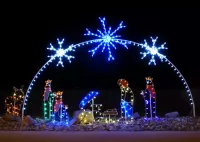
Christmas is an annual festival celebrated on December th commemorating...
Hong Kong is a Special Administrative Region of the People's...

Disneyland located in Anaheim California is the first theme park...
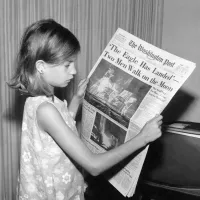
News encompasses information about current events disseminated through various media...
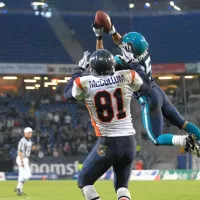
Football is a family of team sports primarily involving kicking...
Trending

5 days ago Aaron Wiggins seizes opportunity with OKC Thunder injuries, recovers from adductor issue.
2 days ago Jalen Williams' Impact: Thunder, Warriors Matchups, Dort's Future, Injury Return

7 months ago Mikaela Shiffrin Releases Final Episode of "Moving Right Along" Web Series

De'Anthony Melton known as Mr Do Something is a professional basketball player in the NBA currently playing for the Brooklyn...

Harrison Butker is a placekicker for the Kansas City Chiefs in the NFL Drafted in he played college football at...

6 months ago Harrison Ford and Gene Simmons to be honored by Operation Smile for charity.
Popular
Matt and Ross Duffer known as the Duffer Brothers are...
Aftyn Alyssa Behn is an American politician currently serving as...

Candace Owens is an American conservative political commentator and author...

XXXTentacion born Jahseh Dwayne Ricardo Onfroy was a controversial yet...

Ilhan Omar is an American politician currently serving as the...
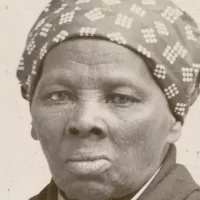
Harriet Tubman was a pivotal American abolitionist and social activist...
